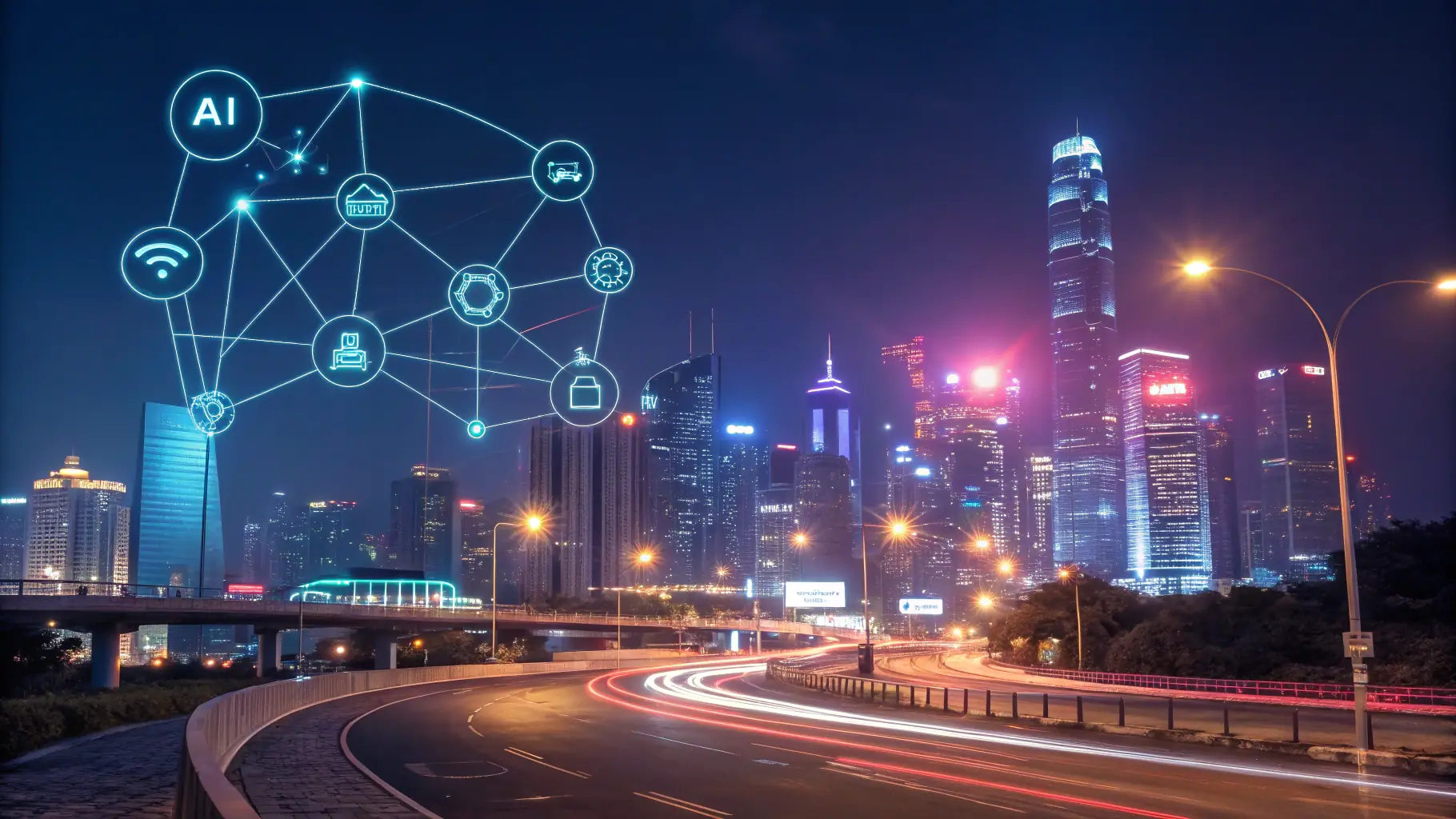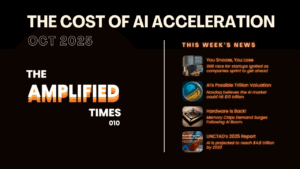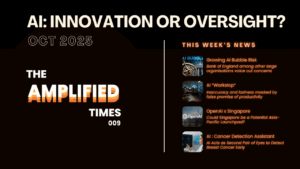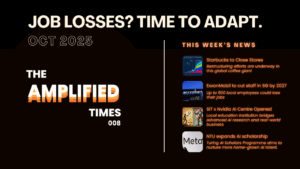In boardrooms and HR departments around the world, a silent alarm is ringing. Artificial intelligence isn’t just another tech buzzword – it’s a fast-approaching tidal wave poised to upend how we work, hire, and compete. Ignoring it is no longer an option; in fact, doing nothing is the surest way to ensure your business becomes roadkill on the information superhighway. As one popular adage warns, “AI won’t replace your job. But people using AI will.” Standing still in this revolution is the fastest way of moving backwards. The message to bold business leaders and HR professionals is clear: adapt or face extinction in the corporate ecosystem.
To underscore the urgency, consider what will happen to organizations that pretend the AI upheaval isn’t happening:
- Falling Behind Competitors: AI-driven companies are already more efficient, productive, and innovative, meaning those late to adopt will struggle to stay ahead. Simply put, if you don’t leverage AI, your rivals will – and they’ll leave you in the dust.
- Costly Decision Blind Spots: Advanced AI analytics turn data into insight at lightning speed. Without these tools, organizations make decisions half-blind, leading to decreased productivity and higher costs over time. In a world where algorithms optimize everything from supply chains to marketing, gut decisions and outdated reports just won’t cut it.
- Talent Drain: Your best and brightest employees crave growth. If your culture ignores innovation, they’ll flock to companies that invest in their future. When a business fails to adapt, top talent walks out the door, taking their skills and energy with them. In today’s job market, innovators won’t tolerate stagnation, and losing them can cripple your company’s prospects.
- Stifled Innovation: A company culture that sticks to “the way we’ve always done things” will find itself unable to navigate new challenges. Without embracing AI and upskilling staff, expect missed opportunities and stalled growth. In an economy where agility is key, a failure to evolve means watching the future pass you by.
AI is a global disruptor: up to 40% of jobs worldwide could be impacted, with effects rippling through every industry and region.
The Looming Threat of AI Workforce Displacement
This is not hyperbole – it’s a hard truth backed by data. The United Nations warns that AI and automation could affect up to 40% of all jobs globally. In advanced economies, the exposure is even higher; estimates suggest as much as 60% of jobs in countries like the U.S. and Western Europe could feel the impact of AI. We are witnessing one of the most significant workforce shifts since the Industrial Revolution, and it’s unfolding right now, not in some distant future. Repetitive tasks – whether blue-collar factory work or white-collar data processing – are squarely in AI’s crosshairs. Entire professions from administrative assistants to call center agents are being redefined or replaced by algorithms and chatbots.
The numbers are sobering. The World Economic Forum projected that by 2025, roughly 85 million jobs could be displaced by automation and AI, even as 97 million new roles emerge requiring new skills. In other words, a huge labor market churn is underway. Ignore this at your peril: businesses that don’t help their workforce ride the coming wave will be swept away by it. Indeed, half of all employees will need reskilling by 2025 to meet the demands of this new age. The choice for leaders is stark – proactively navigate these changes, or watch your organization’s relevance erode as roles vanish and skills become obsolete.
And yet, denial runs rampant. Surveys show that over half of workers are worried about AI’s impact on their job security – but paradoxically, many remain complacent, assuming the “robots” won’t really come for them. Gallup found that while 72% of CHROs (HR heads) expect AI to eliminate jobs in their organizations, 53% of employees admit they don’t feel prepared to work with AI at all. Even more startling, a vast majority of workers have never or barely used AI tools on the job. This gap between executive awareness and employee readiness is a ticking time bomb. As leadership charges ahead implementing AI to boost efficiency, unprepared employees could be caught off guard and left behind – a perfect recipe for internal chaos, fear, and resistance.
The Skills & Culture Gap: Unprepared and At Risk
So why are so many workforces unready? In a word: lack of preparation. Many organizations simply haven’t invested in the skills training, cultural change, and strategic foresight needed to make AI a success story rather than a nightmare. The result is a massive skills gap. Eight in ten business leaders believe their workforce lacks the ability to build or work effectively with AI, essentially saying 80% of workers aren’t ready for AI’s demands. Companies that have not fostered a culture of continuous learning are now staring at a chasm between the skills employees have and the skills they urgently need.
Culture plays a critical role here. Is your company culture one of adaptability, innovation, and data-driven decision-making? Or is it clinging to old habits and hierarchies? The risks of cultural unpreparedness are profound. A workplace that fails to encourage experimentation or that punishes failure will never harness AI’s potential, because employees will fear the very changes they need to embrace. In contrast, organizations that champion a growth mindset can turn AI from a boogeyman into a trusted ally.
Regional and industry cultures add another layer of complexity. For instance, in some traditional industries or markets, there’s a hesitancy to trust AI, or a preference for human judgment even when machines prove more efficient. Meanwhile, companies in cutting-edge tech hubs are racing forward, iterating and learning as they go. If your company’s culture is risk-averse or change-resistant, consider this a red alert: you may over-index on caution and underprepare your people, inadvertently sabotaging your own future. As Gallup’s workplace analysis warns, leaders must communicate their vision and support their people through the AI transition, or workers will be blindsided by sudden changes. The time to start creating a culture of AI-readiness – one that treats learning as integral and change as opportunity – was yesterday.
From Panic to Progress: Turning AI Fears into Fuel
Yes, the outlook can sound frightening – and that’s the point. Fear can either paralyze or catalyze. The good news is that for organizations willing to be bold and proactive, AI is not a death knell at all. It can be a renaissance. The narrative doesn’t have to be “AI versus humans.” In fact, the most enlightened leaders see it as “AI with humans.” The companies that thrive will be those that use AI to augment human capabilities, not replace them.
Imagine freeing your employees from drudgery – automating the mind-numbing tasks and allowing your talent to focus on creativity, strategy, and innovation. AI can crunch data in seconds that would take an analyst weeks, empowering human teams to make smarter decisions faster. Rather than employees fearing they’ll be made obsolete, they can be upskilled to work alongside AI, doing higher-value work that machines alone could never handle (think: nuanced customer relations, complex problem-solving, ethical decision-making). But this optimistic scenario only happens with intentional action: investing in training, redefining roles, and instilling a culture that embraces lifelong learning.
Forward-thinking organizations have already begun this transition. They treat AI literacy as the new must-have skill, offering continuous learning opportunities so employees at all levels can get comfortable with AI tools. They encourage cross-functional teams to experiment with AI on real projects, building confidence and spotting where human judgment adds value on top of AI efficiency. Crucially, visionary leaders also tackle the emotional side: openly acknowledging employees’ anxieties, communicating clearly how jobs will evolve, and setting a tone that technology change is a challenge to conquer together, not a threat to silently dread. By taking these steps, you turn panic into progress – channeling that nervous energy into concrete upskilling and innovation.
And what about that inevitable workforce displacement we hear so much about? The truth is some jobs will disappear – but new ones will emerge just as fast, if not faster. The key is making sure your people are ready to fill those new roles, rather than someone else’s. That means mapping out future career paths now: if AI takes over Task A, how will Employee X’s role shift into more advanced Tasks B and C? By treating employee development as a strategic priority, you build an internal talent pipeline that can smoothly transition alongside technology. This kind of workforce agility doesn’t happen by accident; it demands data-driven insight into skills, roles, and personality fit – and it demands starting today, not when the layoffs are looming.
Building the Bridge to an AI-Augmented Future
How can business leaders and HR trailblazers actually put this into practice? The solution lies in bridging the human-AI divide – creating a synergy where technology amplifies what humans do best. This is where platforms like Amplified Human come into play as a guiding light. The philosophy is simple yet powerful: technology should magnify human potential, not eclipse it. Instead of a sales pitch for AI, think of it as a partnership – a way to future-proof your people and your business in tandem.
For example, imagine having AI-driven personalized skill development for every employee – pinpointing each person’s strengths and gaps, and then tailoring learning paths to equip them with the exact skills they’ll need in an AI-powered world. Rather than generic training, it’s targeted like a laser: whether it’s a marketing professional learning to leverage AI analytics or an HR manager mastering AI recruitment tools, the learning is customized and continuous. Next, consider comprehensive career path mapping. With the help of AI insights, you can chart how roles are evolving and identify opportunities for your team members to grow into new, emerging positions within the company. This isn’t a static HR exercise; it’s dynamic and data-driven, giving employees a clear vision of their future in the organization (and reducing that fear of the unknown). It says to your people: “You have a future here, and here’s how we’ll get you there together.”
Empowering people + AI: Forward-looking companies use data and AI tools to develop their talent and culture, not replace it.
Finally, there’s the often-overlooked piece of the puzzle: workplace culture analysis and transformation. The best AI strategy in the world will flop if your culture isn’t ready to embrace it. Using AI-based tools to gain insightful analytics on your company’s culture can reveal where the pain points and resistance lie. Perhaps teams are siloed and not sharing knowledge (a big innovation killer), or maybe there’s a lack of psychological safety that makes employees afraid to experiment with new tech. By diagnosing these issues with data – and yes, AI can help do this via sentiment analysis, network analysis of collaboration patterns, etc. – leaders can design targeted change initiatives. Think culture-driven AI change management: introducing AI in a way that aligns with your core values, involves employees in the process, and celebrates quick wins to build trust. When people see AI making their work better (not just making them redundant), the cultural tide turns from skepticism to enthusiasm.
All of these approaches are part of a holistic solution. It’s no coincidence that Amplified Human’s suite of AI-powered services focuses on precisely these areas – personalized skill development, career mapping, and workplace culture intelligence. The aim is to take a data-driven yet human-centric approach to transformation. Targeted upskilling programs ensure your workforce thrives alongside AI, rather than being threatened by it. Career mapping and predictive talent analytics show where roles are headed and how to prepare people for what’s next. And by understanding the pulse of your organizational culture, you can proactively address skills gaps and fears before they become crises. In short, you’re not just installing new tech and wishing everyone luck – you’re building a bridge for your people to walk confidently into the future.
Embrace the Revolution – or Be Left Behind
The alarm bells are ringing, but this isn’t cause for despair. It’s a rallying cry. The future of work is not a dystopia of human obsolescence; it’s a future where human potential is amplified by AI – if we have the courage to act. Business leaders and HR professionals stand at a crossroads. Down one path lies denial, comfort zone thinking, and eventual irrelevance. Down the other lies a bit of fear, yes, but also excitement, growth, and renaissance for your workforce. The risks of ignoring AI are real and severe, from lost competitiveness to a hollowed-out company culture. But the rewards of harnessing AI – a reinvigorated workforce, new opportunities, a culture of innovation – are equally real, and downright exhilarating.
Remember: AI isn’t the end of jobs – it’s the beginning of smarter, more human-focused work. Those who seize this moment will find that automation and algorithms can free us to be more human, not less – more creative, more strategic, more empathetic. Those who delay, on the other hand, may find the future decided for them by those who didn’t. The era of “bold and rebellious” leadership is upon us – where being provocative and data-driven in the pursuit of innovation separates the winners from the footnotes of history.
The choice is yours. Will you amplify your humans with AI, or let your ignorance amplify your risks? The companies that survive and thrive will be those that bridge the gap now – training people, adapting cultures, and partnering with AI in a meaningful way. The others will look back in a few years, stunned at how fast they went from industry leaders to cautionary tales. In this age of digital Darwinism, the mandate for organizations is simple: evolve, empower, and embrace the future – or get left behind.
The clock is ticking. It’s time to take that leap, leverage AI as your ally, and amplify the human advantage in your organization before it’s too late. The future belongs to the brave – so stay hungry, stay foolish, and above all, don’t get caught standing still. Your workforce is counting on you to lead the way.




